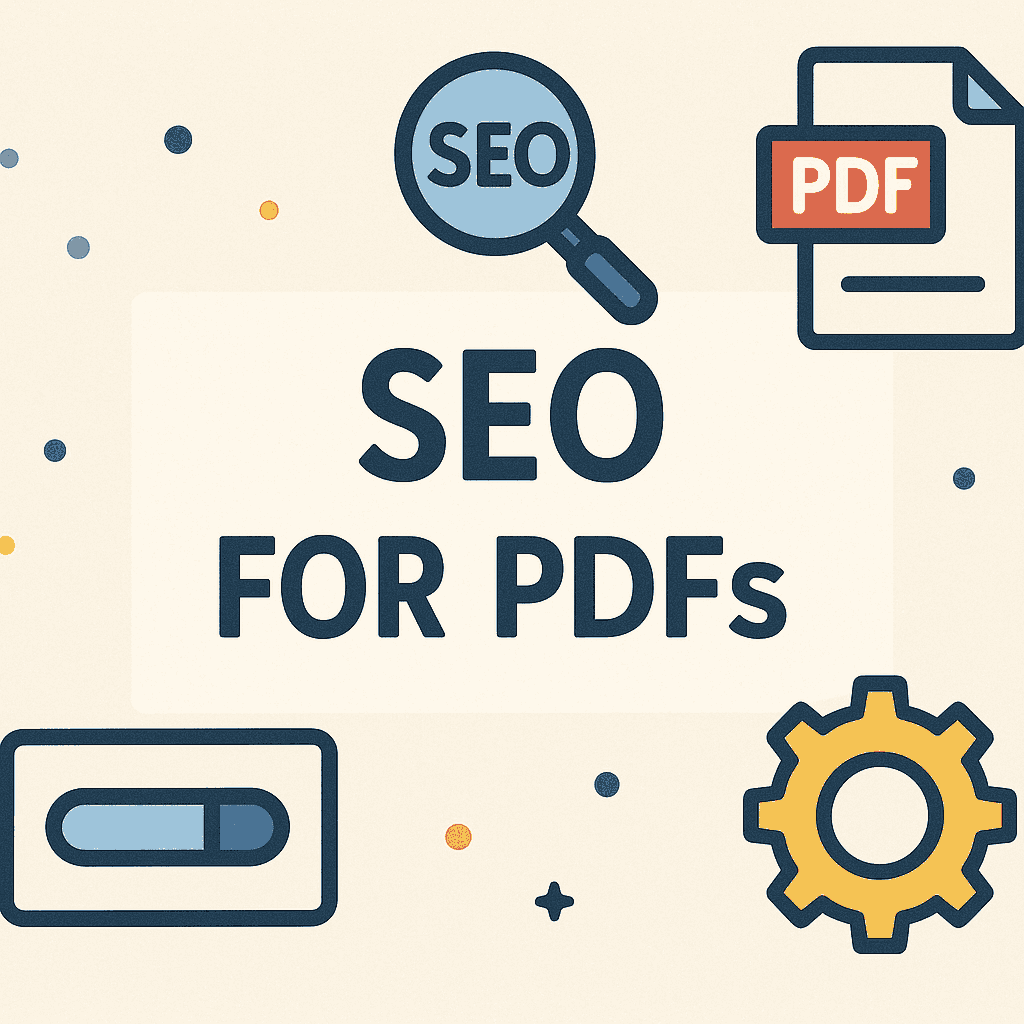Why Seo for pdfs Matters
PDFs remain a staple for sharing detailed reports, whitepapers, and guides. Yet, when it comes to search engine performance, many overlook the importance of optimizing these files. This guide dives deep into the world of SEO For PDFs, delivering a hands-on, human-crafted approach backed by six years of real-world experience. Our aim is to help you unlock hidden traffic potential and improve your document’s discoverability without sounding mechanical or overproduced.
Understanding the Basics of SEO For PDFs
Optimizing PDF documents is not merely about uploading files to your website; it involves a detailed strategy that mirrors conventional SEO for web pages. Here’s what you need to know:
- Indexability: Search engines like Google can crawl PDFs, but they might not extract all the context unless properly optimized.
- Metadata Optimization: Properly filling out PDF properties—Title, Author, Subject, and Keywords—plays a crucial role.
- File Naming Conventions: A descriptive, keyword-rich file name significantly boosts the relevance of your content.
By integrating SEO For PDFs strategies, you can ensure your PDFs not only complement your website’s overall SEO but also stand out independently.
Detailed Strategies for SEO For PDFs
Below is an in-depth breakdown of the actionable steps to optimize your PDFs:
1. Create High-Quality, User-Focused Content
Every great SEO strategy begins with quality content. When crafting your PDF:
- Content Depth: Provide thorough insights that address your audience’s questions and pain points.
- Readability: Structure your content using short paragraphs, bullet points, and visual aids.
- Value Proposition: Focus on delivering actionable tips and unique industry insights that your audience can’t get elsewhere.
Integrating SEO For PDFs into your content strategy means your PDFs are both engaging and discoverable.
2. Optimize File Names and Metadata for SEO For PDFs
A crucial step in our strategy is ensuring that your PDF files are immediately recognizable by search engines:
- File Name: Rename your PDFs with descriptive titles that include your primary keyword. For instance, instead of “document.pdf”, use “ultimate-guide-to-SEO For PDFs.pdf”.
- Metadata Fields:
- Title: Reflects the content and includes SEO For PDFs.
- Subject: Offers a brief yet compelling summary.
- Author: Include your brand or expert name for trust.
- Keywords: List relevant terms, with SEO For PDFs being primary.
Quick Reference Table for Metadata Optimization
| PDF Element | Best Practice for SEO For PDFs |
| File Name | Use descriptive, keyword-rich names |
| Title | Include SEO For PDFs and key content terms |
| Subject | Write a concise summary with target keywords |
| Author | Attribute your brand or expert identity |
| Keywords | Prioritize SEO For PDFs among related terms |
3. Structure Your Content with Clear Headings and Subheadings
Organizing your content is key to both readability and SEO. Use a hierarchical structure:
- H1: Main title with SEO For PDFs.
- H2 & H3: Subheadings that break down the content into digestible sections.
- Bullet Points & Lists: Enhance scannability and highlight essential points.
By naturally weaving SEO For PDFs into your headings, you improve clarity for search engines and readers alike.
4. Enhance Accessibility and User Experience
Optimizing PDFs isn’t solely about keywords; it’s also about user experience:
- Alt Text for Images: Provide descriptive alt text for every image. This ensures that both search engines and visually impaired users understand your content.
- Internal and External Links: Embed relevant hyperlinks that direct readers to additional resources. This not only enhances user engagement but also bolsters your SEO For PDFs efforts.
- Readable Fonts and Layout: Choose fonts that are easy on the eyes and design your layout to facilitate smooth reading, especially on mobile devices.
5. Optimize for Mobile and Speed
With an increasing number of users accessing content on mobile devices, ensuring your PDFs are mobile-friendly is crucial:
- Responsive Design Tips: While PDFs aren’t inherently responsive, consider designing with a single-column layout to minimize horizontal scrolling.
- File Compression: Use tools to compress your PDFs without sacrificing quality. A lean file improves load times and overall user experience, supporting your SEO For PDFs goals.
6. Monitor Performance and Update Regularly
Optimization is an ongoing process. Regularly review your PDFs for performance insights and update them as necessary:
- Analytics Tracking: Use trackable links or PDF analytics platforms to monitor downloads, time spent on the document, and bounce rates.
- Content Refresh: Update outdated statistics, links, and keywords periodically to maintain relevance in the evolving landscape of SEO For PDFs.
- Feedback Incorporation: Collect reader feedback to refine and improve future PDF documents.
Advanced Techniques in SEO For PDFs
Taking your optimization efforts further involves applying more advanced tactics:
7. Leverage Structured Data
While PDFs don’t naturally support structured data like HTML pages, you can implement workarounds:
- Supplementary Landing Pages: Create a dedicated landing page for your PDF where you can implement rich snippets, schema markup, and detailed descriptions.
- Tracking Enhancements: Use UTM parameters in your internal links to track user interactions accurately.
8. Build a Backlink Profile for Your PDFs
Backlinks aren’t reserved solely for web pages. Encourage reputable websites to link to your PDFs by:
- Offering Exclusive Content: Create high-quality guides that naturally earn citations.
- Guest Posting: Write guest articles and include links to your PDF resources.
- Outreach Campaigns: Engage with industry influencers and ask them to reference your detailed guides on SEO For PDFs.
9. Case Studies and Real-Life Examples
Incorporate case studies and examples to demonstrate the success of SEO For PDFs strategies:
- Before and After Scenarios: Highlight how optimized PDFs increased organic traffic and engagement.
- User Testimonials: Include quotes and feedback from users who benefited from your optimized content.
- Data-Driven Results: Showcase performance metrics to validate your approach.
Common Pitfalls and How to Avoid Them in SEO For PDFs
Even with the best strategies, certain pitfalls can undermine your efforts. Here’s what to watch out for:
- Neglecting Metadata: Failing to optimize metadata results in missed opportunities for search engine visibility.
- Overloading with Keywords: While repetition of SEO For PDFs is important, balance is key. Excessive use can trigger spam filters.
- Ignoring Mobile Users: Overlooking mobile optimization can lead to poor user experience and higher bounce rates.
- Static Content: Regularly update your PDFs to avoid them becoming outdated in the fast-paced digital environment.
Creating a Mobile-Friendly and Lightweight PDF for SEO For PDFs
Mobile users deserve as much attention as desktop users. Here are additional tips:
- Single-Column Layout: Favor a single-column design to ensure content is easily readable on smaller screens.
- Interactive Elements: If possible, include clickable elements that aid navigation, like a table of contents with internal links.
- Compression Tools: Use reliable compression tools to maintain visual quality while reducing file size.
Measuring Success: How to Track Your SEO For PDFs Performance
Tracking the impact of your optimization efforts is as important as implementation. Consider the following metrics:
- Download Rates: How many times has your PDF been downloaded?
- Engagement Metrics: Measure average time spent on the document and scroll depth.
- Backlink Quality: Track the number and quality of backlinks directed to your PDF.
- User Feedback: Regularly solicit feedback to gauge satisfaction and areas for improvement.
Implementing these tracking strategies ensures that your SEO For PDFs efforts remain dynamic and effective.
Final Thoughts on SEO For PDFs
To wrap up, optimizing PDFs is a powerful yet underutilized aspect of digital marketing. With the right blend of detailed content, strategic keyword placement, and technical enhancements, your PDFs can rank as effectively as your web pages. Embrace these comprehensive tactics to not only improve search engine rankings but also provide genuine value to your audience.
Remember, the world of SEO For PDFs is continuously evolving. Stay ahead of the curve by keeping up with industry trends, regularly updating your content, and always prioritizing the user experience.
By following these human-centric, experience-driven guidelines, you can transform your PDFs into dynamic assets that drive traffic, engagement, and lasting impact.



